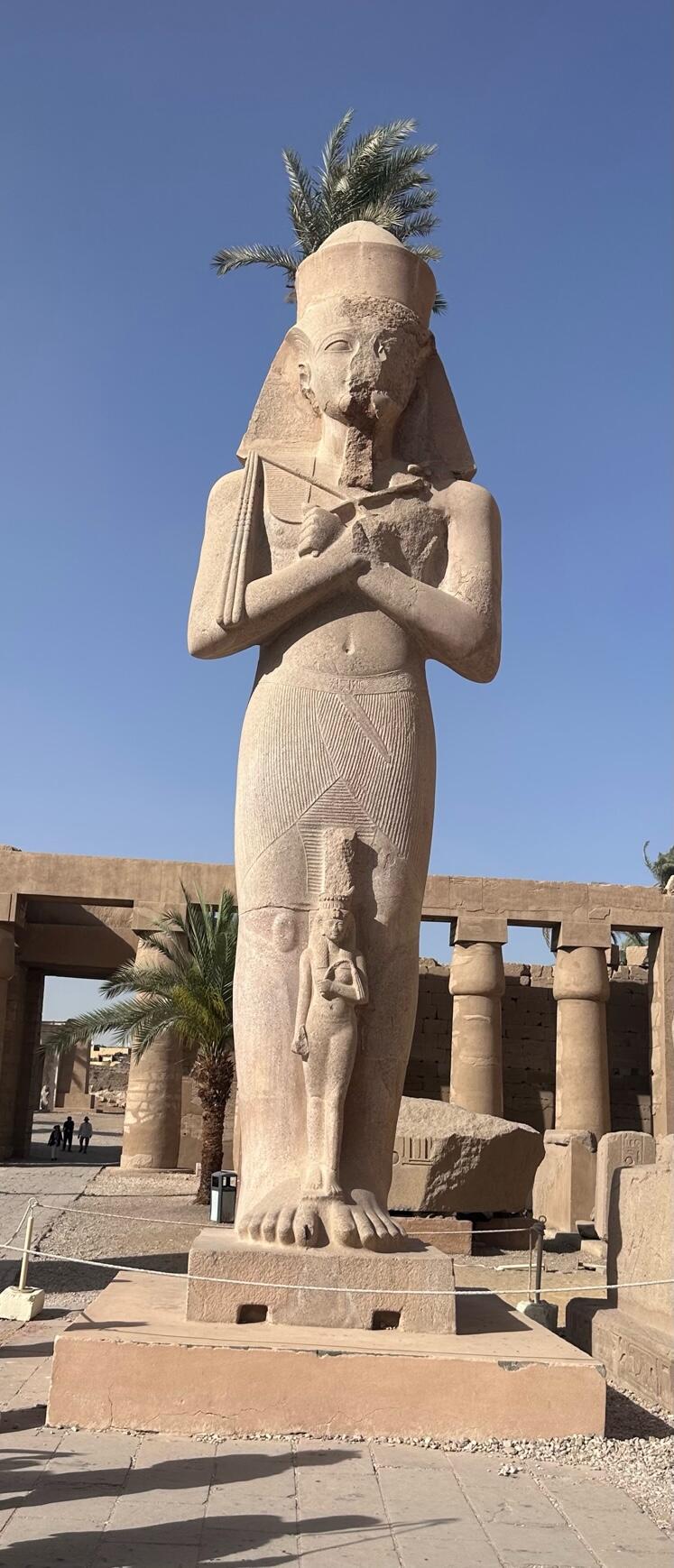Egypt, Luxor and Karnak – Part 2
- At September 17, 2023
- By Jessica
- In Travel
 0
0
Called the "Hundred-Gated City" by Greek Historian Homer, Luxor is set on the east bank of the Nile River. It is a pretty city with a French flavor. The city was once known as Waset, then as Thebes, now as Luxor, which means "City of Palaces" in Arabic. As Thebes, it served as the capital of Egypt's "New Kingdom." Today, the Nile hugging promenade of the City is lined with beautiful colonial hotels and some of the world's most ancient and significant ruins. Many consider this city, watched over by graceful single-sailed feluccas plying the Nile, one of the world's great open air museums. In the center of town, the vast ruins of the Temple of Luxor, dating back to 1392 BC, sit like the Plaza Hotel does in New York - just part of the scenery! The sprawling Temples of Luxor and Karnak on the east bank are linked by the ancient Avenue of the Sphinxes.

Ram head = health
Lion body = symbol of power.
On the west bank, in the Valley of the Kings and the Valley of the Queens, lie the tombs of Egypt's great pharaohs. The ancient Egyptians stopped building pyramids as royal tombs after thieves stripped them bare opting instead to bury their royalty in secret tombs in Thebes, today's West Bank of Luxor.
To walk among these testaments to time, history, and civilization is a profound experience. To stand, perhaps, in the same spots where Ramses II, Julius Caesar, Mark Antony, and Cleopatra may have stood.
During the time of the 18th dynasty, when Akhenaten was pharaoh, approximately 1351-1334 BC, he changed the religion from polytheism to a monotheistic system worshiping only the God Aman-Ra (God of the Air and the Sun). He created a holy triad: Aman-Ra, Mut, Khnoso, with Khnosu being the moon god and Mut being the sky goddess. Think about that - Akhenaten was the inventor of monotheism. The Egyptians have a theory, so far unproven, that Joseph of multi-colored coat fame, and known to be vizier to a pharaoh around this time, may have planted the idea of monotheism in Akhenaten's mind. Some Egyptologists believe that Joseph and Akhenaten were the same person! Anyway, Akhenaten made Karnak the center of religion but the Egyptian high priests didn't like this new idea of monotheism and ran Akhenaten out of town. He reestablished his kingdom in Amarna. The high priests hunted him down and murdered Akhenaten and destroyed Amarna. The renowned beauty Nefertiti was his wife. Nefer = beautiful one Titi = her name. (The wife of Ramses II was Nefertari - more on her later.) Akhenaten and Nefertiti had no sons, only two daughters. One daughter was married to nine year old King Tutankhamen. After killing Akhenaten, the high priests put King Tut in the position of King, moved the capital back to Luxor, where Tut ruled for ten years. He was controlled by the priests who killed him when he came into adulthood.

What followed was, in essence, a religious coup, placing a former high priest as Pharaoh - King Ay. An army general, Horemheb, killed King Ay and became King. In essence, a military coup. The son of Horemheb was Ramses I. King Siti I, whose tomb we describe in Part 3, was the son of Ramses I. Successive kings were from the military, including the famed Ramses II who reigned for 67 years and died at age 90.

Ramses II was married to Nefertari who was Nubian. Ramses II was the most famous of the 11 Ramses. Ra = (sun god) msw = beloved one. He "dethroned" the high priests, constructed many buildings and monuments, had 53 wives, 111 daughters and 67 sons.
Karnak Temple was built over 2000 years by generations of pharaohs. The 62-acre Temple of Karnak was dedicated to the god Aman.*
* Alternate spellings are Amon, Amon, et al. Same god.
The great " Hypostyle Hall," a colonnaded court for priests and nobles, is a forest of 134 giant pillars. It takes your breath away.

There is also a section of the temple for commoners to make their offerings and a Sanctuary only for the high priest and the Pharaoh where they present the offerings collected from the populace to Aman-Ra.
Fun Fact: Straight beard on iconography means king is alive. If curved beard king is dead.
Fun fact: Each cobra in iconography represents a kingdom. One cobra, king is from one part of Egypt. Two cobras, the king is ruling both north and south Egypt. Three cobras, the king rules north and south Egypt plus Nubia/kush.
The Ankh, which is omnipresent, is a symbol of long life and eternity.


